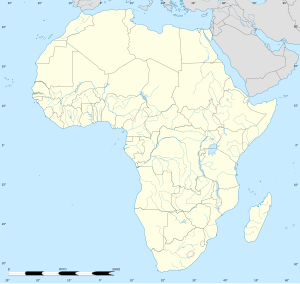| Tabora Offensive | |||||||
|---|---|---|---|---|---|---|---|
| Part of the East African Campaign of World War I | |||||||
 Map of the Tabora Offensive | |||||||
| |||||||
| Belligerents | |||||||
| Commanders and leaders | |||||||
|
|
| ||||||
| Strength | |||||||
|
- 12,000 soldiers[b] - 2,800 soldiers - 10,000 porters[c] |
- c. 8,000 soldiers[d] - Unknown number of porters | ||||||
Location within Tanzania | |||||||
The Tabora Offensive (April–September 1916[1]) was an Anglo-Belgian offensive into German East Africa, which ended with the Battle of Tabora in the north-west of German East Africa (modern-day Tanzania), it was part of the East African Campaign in World War I. The forces of the Belgian Congo crossed the border with German East Africa and captured the port city of Kigoma and the city of Tabora (the largest town in the interior of the German colony). In August a smaller Lake Force under the command of the South African brigadier general Crewe, launched a parallel attack from Uganda, also aimed at taking Tabora.[e][5] The completion of the Tabora Offensive not only left much of the Ruanda-Urundi territory under Belgian military occupation but gave the Allies control of the important Tanganjikabahn railway.[6][7]
- ^ a b Tucker 2014, p. 1529.
- ^ a b Paice 2009, pp. 224–227, 242–243.
- ^ a b Strachan (2004), p. 152.
- ^ Strachan (2004), p. 150.
- ^ Strachan, H. (2001). The First World War: To Arms. I. New York: Oxford University Press.
- ^ 1916–1917 "Tabora-Mahenge, The Congo and the war", klm-mra.be
- ^ Paice, E. (2009) [2007]. Tip and Run: The Untold Tragedy of the Great War in Africa (Phoenix ed.). London: Weidenfeld & Nicolson. ISBN 978-0-7538-2349-1.
Cite error: There are <ref group=lower-alpha> tags or {{efn}} templates on this page, but the references will not show without a {{reflist|group=lower-alpha}} template or {{notelist}} template (see the help page).


